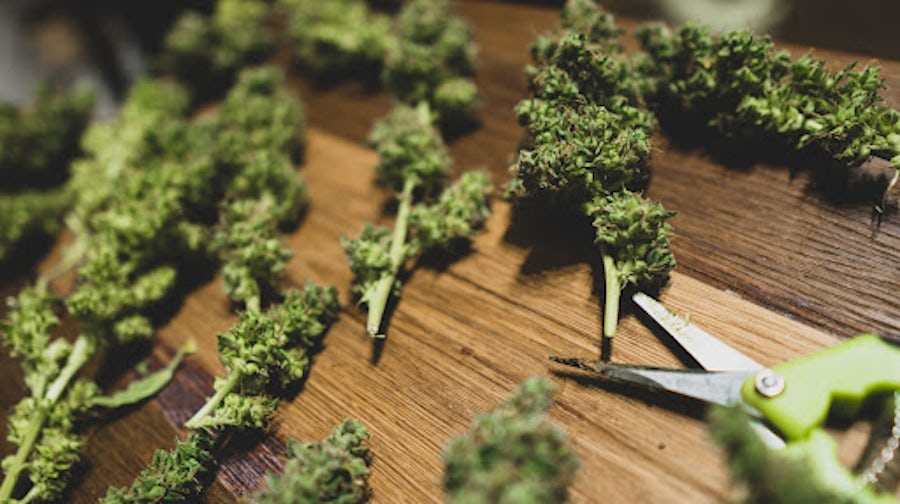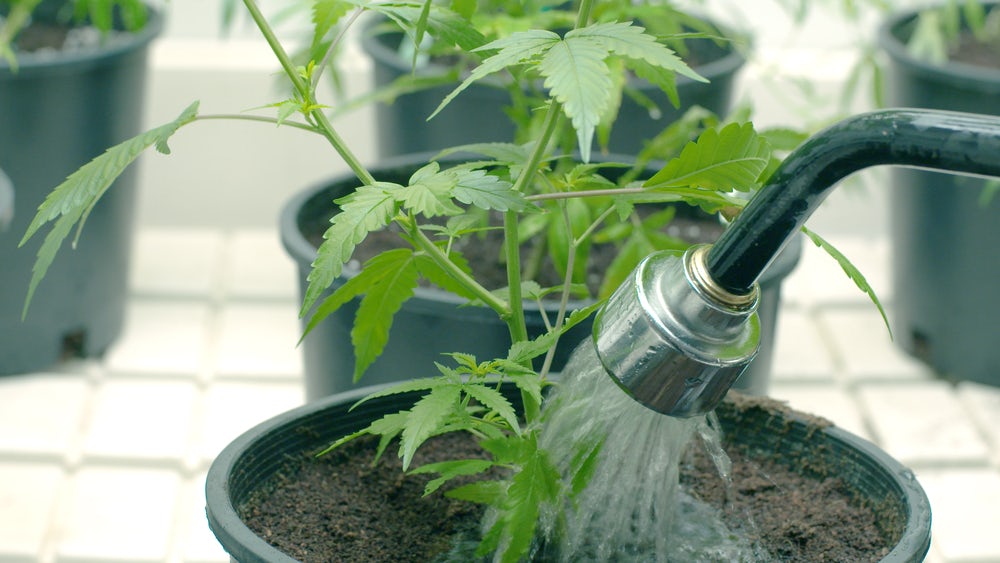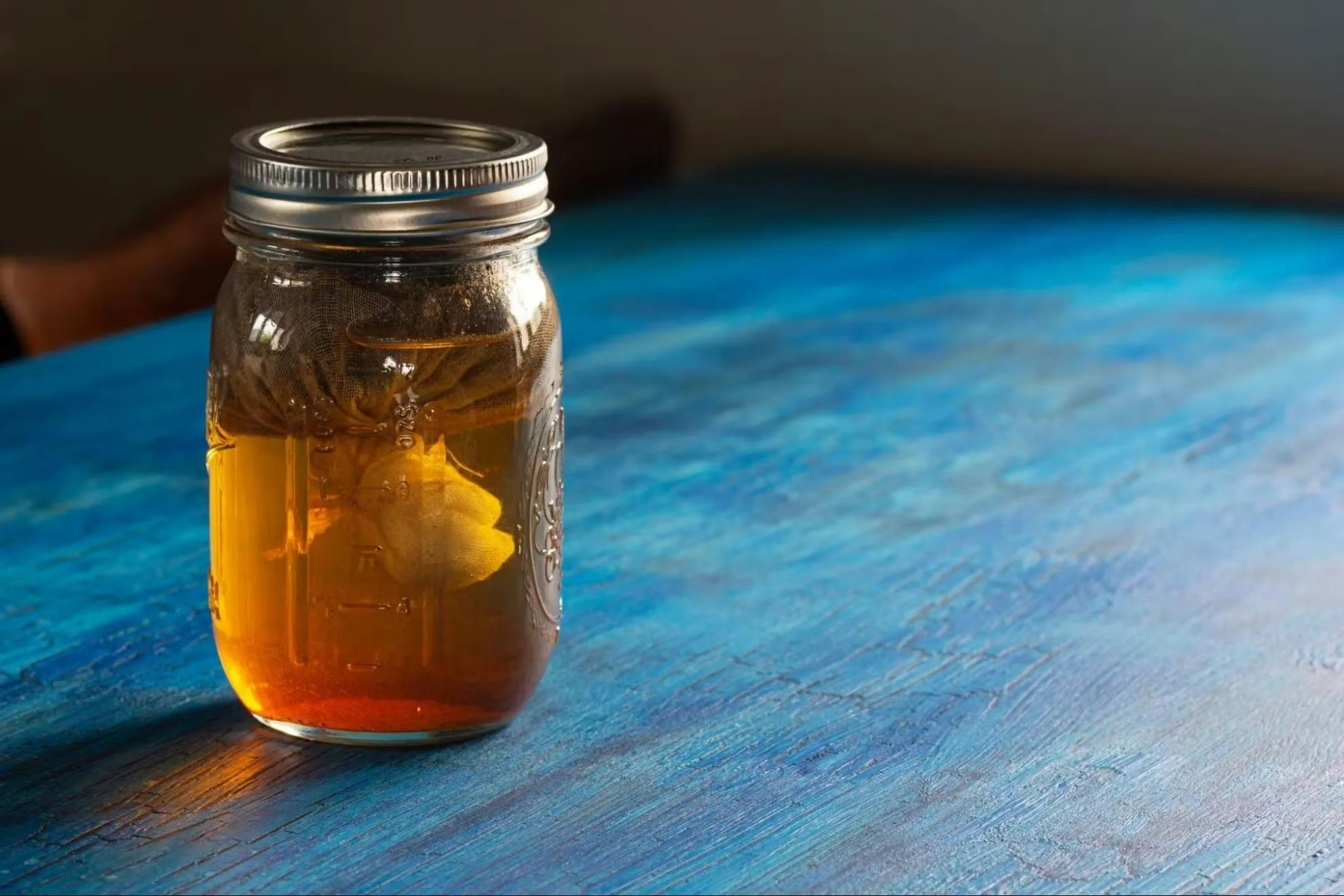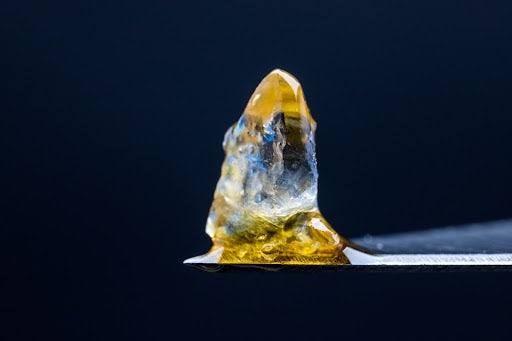Good weed comes to those who wait. But just how many months do you need to grow cannabis indoors?
The average time for most indoor cannabis plants is roughly four months, but that could fluctuate depending on dozens of factors.
While it’s tough to say when your cannabis strain will mature, you could get a general timeline by reviewing marijuana’s primary stages of development. New growers should get comfortable with these phases to monitor their plant’s progress and schedule their time.
From germination to recreation: the average life cycle of cannabis plants
Traditionally, cultivators recognize four distinct phases in a cannabis plant’s life cycle before harvesting:
- germination: 1-14 days
- seedling: 2-3 weeks
- vegetation: 2-8 weeks
- flowering: 8-10 weeks
You could, however, eliminate the germination and seedling phases if you start with clones rather than seeds. In this overview, we’ll assume you’re beginning with a batch of healthy, feminized seeds.
It also assumes that the seed you have chosen is photoperiod sensitive, meaning that it’s flowering cycle is driven by how much light the plant is exposed to.
1. Germination phase: get your seeds going
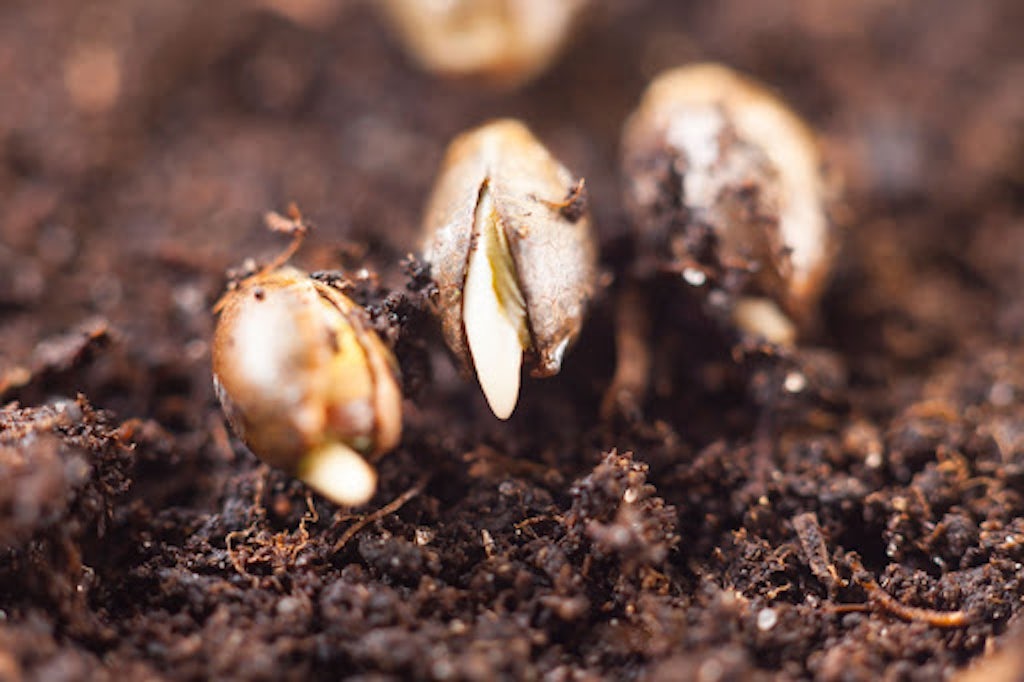
You could plant cannabis seeds directly in soil, but most cultivators prefer coaxing out taproots before putting seeds in their growing medium.
Establishing these first roots gives cannabis seeds extra strength during the delicate seedling phase. It also allows growers to “weed out” any weak seeds beforehand rather than wondering whether they’d take root in soil.
The simplest way to jump-start germination is to wrap seeds in a slightly damp paper towel and cover them with a plate. You could also place seeds in a glass of purified water. The important thing is to keep these seeds far from light.
You also should take extra care to avoid contaminating seeds with your fingers. Some cannabis cultivators use tweezers to avoid any unintentional cross-contamination.
Usually, you’ll see white roots sticking out of your seeds in less than one week. There are some rare cases where it could take longer than two weeks, but you probably shouldn’t wait any longer than 14 days.
Monitor your seeds every day for signs of progress, and place them in starter pods once they show signs of development.
2. Seedling phase: growing baby buds
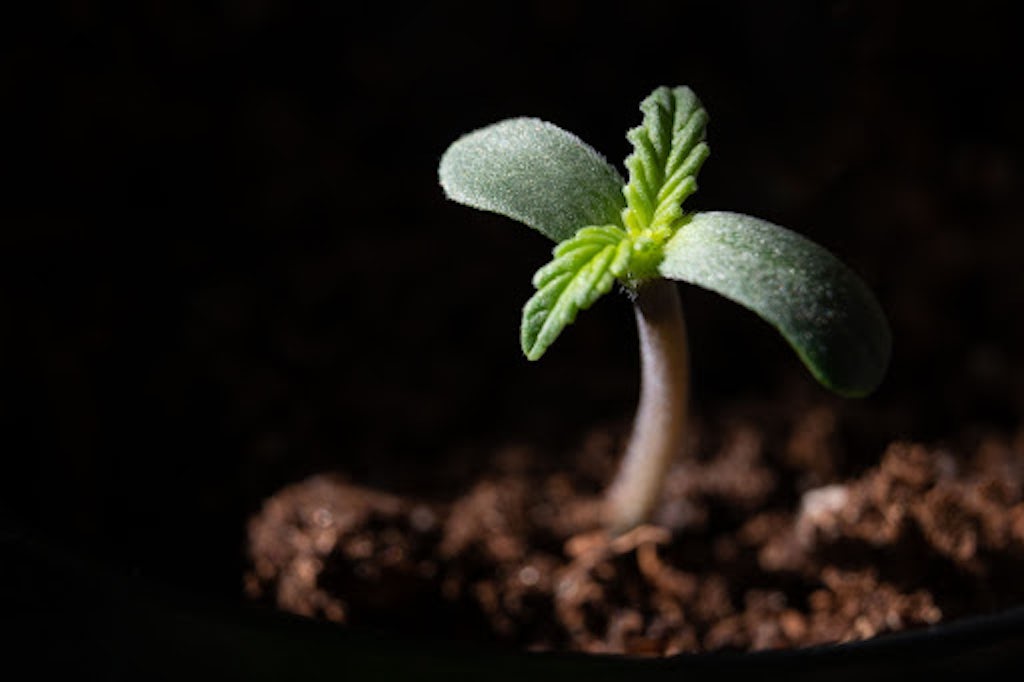
As your cannabis seedlings first reach for life, they will be incredibly fragile. During this early stage, you must use gentle lighting like a dimmed LED or a CFL bulb for 16 hours per day. 1
You should also only mist your cannabis seedlings with pH-corrected water.
Initially, seedlings will have tiny rounded leaves called cotyledons. However, as your plant grows, you should notice the true “cannabis” fan leaves emerge. Generally, people know they’ve transitioned from seedling to vegetation by the number of leaves on their plants.
When you see about four sets of about five fan leaves, your plant should be strong enough to transition to a larger pot. Typically, your seedlings should be ready to transplant into your main soil pot after two to three weeks.
3. Vegetation phase: time to flourish
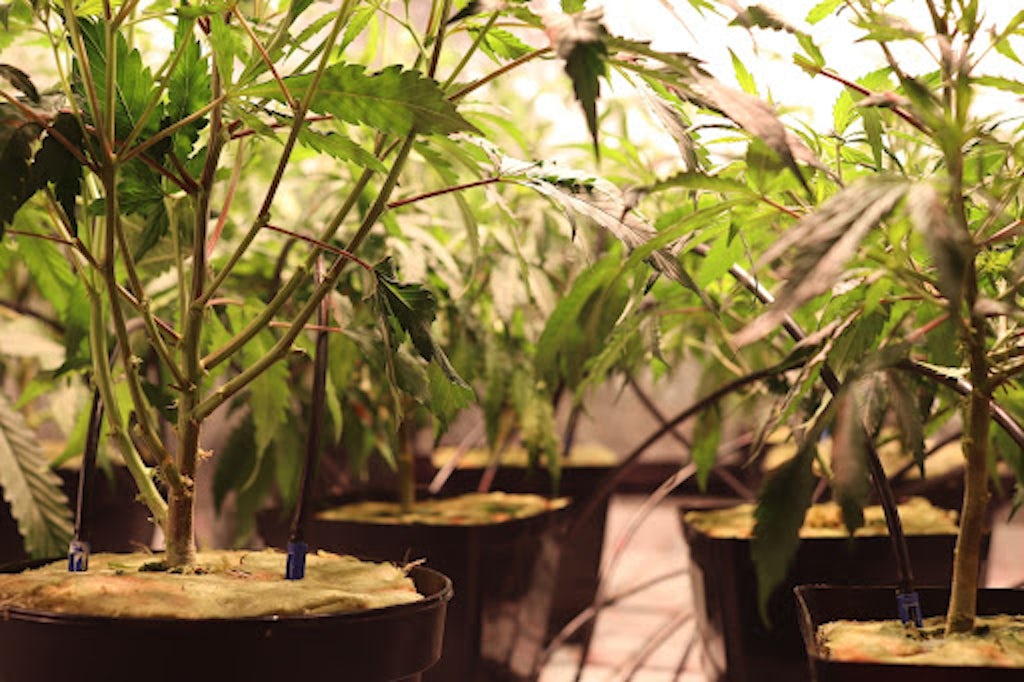
The vegetation phase is all about growth. During this stage, your plants will rapidly reach upward and grow many stems and fan leaves. To help fuel this growth, vegetative plants need extra nitrogen in their feeding schedules. 2
Arguably, lighting is the most consequential element during vegetation. Since cannabis is a photoperiod plant, it will transition to flowering when you limit the daily amount of light. 3
Interestingly, you could transition from vegetative to flowering any time you want. There’s even a training technique called Sea of Green that takes advantage of this biological feature.
The downside of transitioning out of vegetation early is you’ll have fewer buds. By giving the cannabis plant plenty of time to grow, you’ll enjoy more bud sites, and thus a higher return. If you learn training techniques like bending or topping, you’ll increase your total yield even further.
To keep your strains in vegetation, you need to maintain a light schedule of at least 18 hours on. You could keep this going for as long as you want, but most strains are ready to switch after four to eight weeks. It all depends on how strong your flowers are growing, what strain you’re using, and what kind of yield you want.
4. Flowering phase: see the ‘fruits’ of your labor
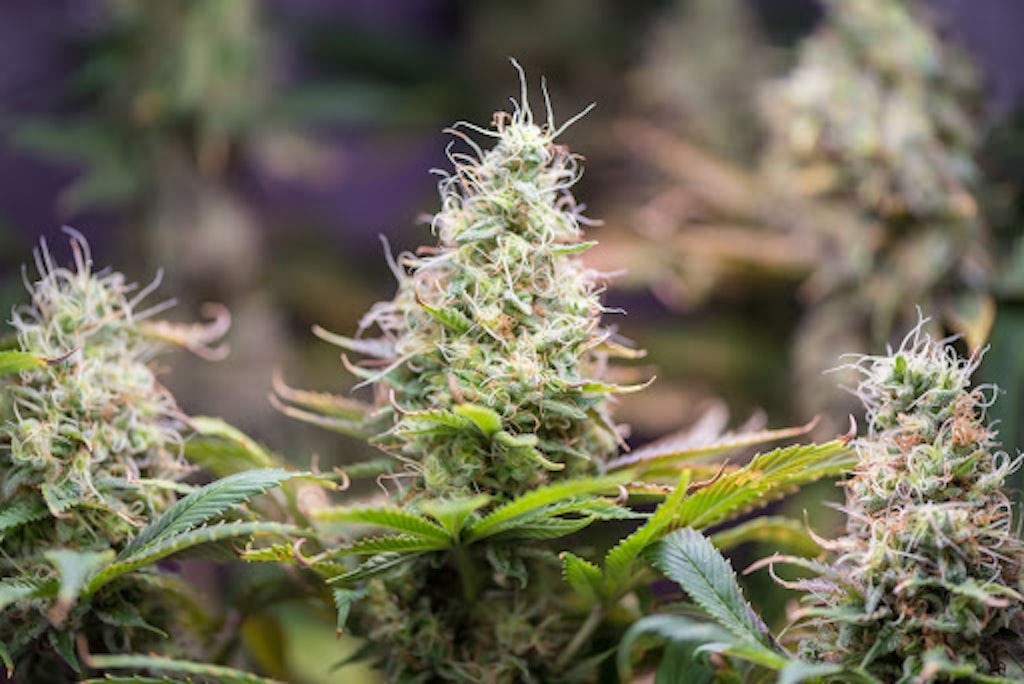
To transition from vegetation to flowering, you need to flip your light schedule from 18/6 to 12/12. The shortening of daylight hours mimics the natural seasonal change from summer to fall and triggers major changes in the plant’s hormones. 4
This causes the plant to shift its focus from growth and development of roots and shoots to the production of pistils as the female plant awaits pollination, which in nature would result in the eventual production of seeds before the plant dies during the winter.
Monitoring flowering plants is similar to vegetation, but you’ll need to transition to flowering nutrients and slightly lower your ambient temperature (~ mid-70s F). You also have to be extra vigilant for signs of mold or hermaphroditism during flowering.
You can determine the sex of a cannabis plant during flowering by looking at the nodes. Male plants have ball-shaped pollen sacs, while females have thin pistil-like strands. If you have a hermaphrodite, it will have both of these features, which means the pollen could disrupt bud production.
The length of the flowering stage largely depends on your strain’s average grow time. The only way to know when to harvest buds is to monitor their size and the color of their trichomes.
For most strains, it takes eight weeks to go through flowering, but it could easily last an additional two or three weeks with sativa strains.
It’s also important to consider that even though this stage is called flowering, that doesn’t mean the plants will solely concentrate on making buds. In preparation to begin producing flowers, plants can double their size during early flowering, so plan your grow space accordingly.
When’s a good time to harvest cannabis?

There’s no set time you should harvest buds from a flowering plant. Instead, you have to rely on your sense of sight to choose when’s a good time to clip your nugs.
Using a high-quality magnifying glass or a jeweler’s loupe, take a close look at the trichomes on each of your buds. Cultivators usually want most of these trichomes to have a milky-white, opaque appearance.
Clear trichomes are too young, and they will have minimal THC concentration. On the opposite extreme, orange-haired trichomes contain an oxidized form of THC known as CBN.5 While some people enjoy CBN’s supposedly sedating effects, most prefer to clip their nugs when most trichomes are milk-white.
Want professional-quality cannabis? You’ll need patience!
Cultivators could use a few tricks to speed up the growing process, but most feminized seeds will take roughly four months to reach maturity. If you’re an impatient cultivator, you could opt for feminized autoflowering seeds, but remember these cultivars have a lower overall yield and often lower cannabinoid production.
For those not keen on the tradeoffs associated with autoflowers, consider starting with clones or focusing on indica strains to shave off significant time from your schedule. On average, indicas reach full-flowering weeks before sativa strains.
As a final tip, growers should research their preferred cannabis strains in online growing forums. Each hybrid has a unique growing pattern, and there’s a wealth of strain-specific information now available online. Knowing the estimated time for your cultivar is the best way to get an accurate read on how long it will take to grow cannabis.
Sources
- McNellis, T. W., & Deng, X. W. (1995). Light control of seedling morphogenetic pattern. The Plant cell, 7(11), 1749–1761. https://doi.org/10.1105/tpc.7.11.1749
- Saloner A, Bernstein N. Response of Medical Cannabis (Cannabis sativa L.) to Nitrogen Supply Under Long Photoperiod. Front Plant Sci. 2020;11:572293. Published 2020 Nov 17. doi:10.3389/fpls.2020.572293
- Moher, M., Jones, M., & Zheng, Y. (2021). Photoperiodic Response of In Vitro Cannabis sativa Plants, HortScience horts, 56(1), 108-113. Retrieved Dec 28, 2021, from https://journals.ashs.org/hortsci/view/journals/hortsci/56/1/article-p108.xml
- Pan, G., Li, Z., Yin, M. et al. Genome-wide identification, expression, and sequence analysis of CONSTANS-like gene family in cannabis reveals a potential role in plant flowering time regulation. BMC Plant Biol 21, 142 (2021). https://doi.org/10.1186/s12870-021-02913-x
- Thomas, F. J., & Kayser, O. (2019). Minor Cannabinoids of Cannabis sativa L. Journal of Medical Science, 88(3), 141–149. https://doi.org/10.20883/jms.367
Sign up for bi-weekly updates, packed full of cannabis education, recipes, and tips. Your inbox will love it.

 Shop
Shop Support
Support